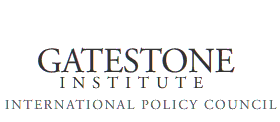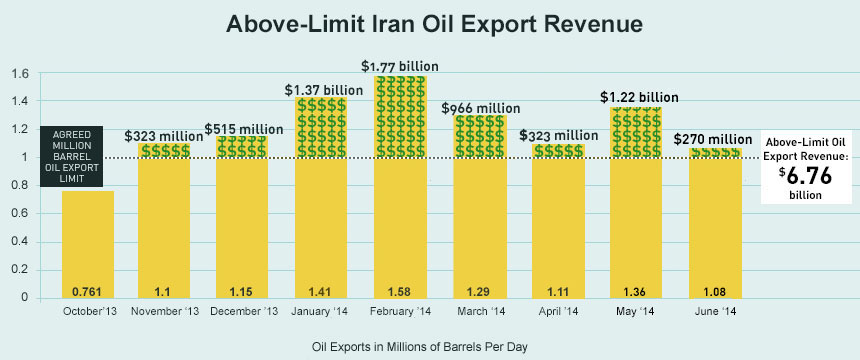The following is a monthly report summarizing the human rights status in Iran in August / September (Solar calendar, month of Shahrivar), 2014. This report has been prepared by the office of Statistics and Publications of the Human Rights Activists Association of Iran. Considering the ongoing suppression and ban on independent human rights activists and organizations in Iran, this report may not be considered a comprehensive and complete reflection of the current status of human rights situation in Iran. It should be noted that the department of Statistics also publishes an annual report about the human rights conditions in Iran in the form analytical and statistical report.
An overview of the human rights situation in Iran in August
Human rights violations in Iran remain a major concern, especially with the dramatic growth of executions in Iran in the month of August / September 2014. The increase in the number of executions is twice the corresponding month last year. The month started with horrible news of 14 executions over a course of 4 days in Bandar Abbas, Sari, Borazjan, and Kerman, indicating the start of a terrible month for the human rights activists in Iran. The worst cases were public execution of 5 prisoners in the province of Fars, and 8 prisoners in the province of Kerman which was carried out secretly in collaboration between the justice system and the security forces.
The UN secretary general, Ban Ki Moon, warned against the significant increase in the number of executions in Iran and accused the new president of Iran, Hasan Rouhani, to not keeping his promises on the human rights issues in Iran. As usual, the Iranian authorities reacted to these allegations by denying the violations of human rights in the country.
One significant case of human rights violation in Iran is the case of a survivor of execution who has been sentenced to death for the second time. Other cases include four times death sentence, 20 years in prison, and 173 lashes for a prisoner nicknamed black spider; confirmation of death sentence for the Dena National Park security force for the third time; chaos in the Ghezel-Hesar prison of Karaj that led to the execution of 14 prisoners; and killing of 10 prisoners by the security forces.
The deputy of the Social Affairs and Prevention of Crime in the Justice office in the province of Kerman clearly indicated that the individuals charged with drug trafficking and those involved in selling Methadone can be sentenced to prison, fine and lashes or in some cases they may be sentenced to death.
The death of a teenage boy named Ali Akbar Younesi in Hamedan, who tried to simulate hanging of prisoners was another aspect of the terrible human rights situation and conducting the death sentences in public. The authorities have always defended the executions decrees as a method to reduce the level of crime whereas according to their own reports the number of murdering has significantly increase to about 26.5, which indicates invalidity of their claims.
This month also continued with the continuous violations of the fundamental rights of religious and ethnic minorities. These violations included obtaining commitment from the immediate family of the dead Baha’i people in Semnan; arrest of Noush Azar Khanjani; Farhad Eghbali’s transfer to the prison; re-arrest of Saghi Fadayi; arrest and interrogation of five Baha’is in Shahin Shahr. Perhaps one of the most controversial news in this respect was the ban on higher education of Baha’I citizens of Iran despite Hasan Rouhani’s promises to stop this tyranny.
The Iranian citizens converted to Christianity were also greatly suppressed by the security forces in Tehran and Isfahan. Reza Rabbani, Abdolreza Ali (Mthias) Haghnejad, and Behnam Irani were three Christian ministers who were sentenced to death with charges of “Moharebeh” and “Fighting against God. This news was significantly worrying for the human rights activists in Iran.
This month was particularly difficult for the Iranian Sufis who peacefully protested against the suppression and continual pressure applied by the security forces. They gathered in front of Justice Office in Tehran; however their gathering faced brutal attack by the security forces that led to many wounded and arrested individuals. It is estimated that at least 800 people arrested in this gathering alone, which clearly indicates lack of freedom and principle rights of the people in Iran.
With respect to Children rights, this report highlights the news of security forces putting pressure on the working kids to leave their tents as well as the recent news of many kids suffering AIDS as a consequent of rape. In the area of workers and unions, this month was very controversial in particular in view of the widespread and unprecedented strike of the workers of Bafgh which resulted in the travel of two special government representatives. The report also highlighted the news of the strike of about 150 workers at Gilana Tile Company; the gathering of the workers of a mine located in the village of Sangrood (in Gilan province) protesting against two months postponing of their salaries; and finally the news of verdict against four workers at the Razi Petrochemical Co. to six months jail and fifty lashes by the local General Court, Branch #10.
In the area of LGBT, this report has also highlighted the arrest of two LGBT activists and another citizen in a beauty salon by security forces in the last month. This is despite the fact that the former president of Iran had publically denied the existence of gay and lesbians in Iran.
According to the deputy president of Iran the water crisis is the most important problem in Iran, and over the last month a number of reports have been published around the water shortage, draught, fire, and destroying the natural resources
Particular attention to the violations of human rights
This section of report pays specific attention to the more sensitive cases of human rights violations. Obviously, this specific attention doesn’t mean that these kinds of reports reflect the severity and dimension of the human rights violations.
Amongst these cases, the gathering of some of the Shin Abad schools girls in front of the office the president has drawn specific attention. The parents of these students expressed their frustrations with respect to the unfulfilled promises by the government and insurance companies.
Moreover, the arrest and continuing imprisonment of Ghoncheh Ghavami, the Iranian-British citizen, as well as the appeal court for Fatemeh Hashemi, Ali Akbar Hashemi Rafsanjani’s daughter, were widely reflected in the media.
One of the most respected reports on the violations of human rights in Iran was re-arrest of Arash Sadeqi, the former political prisoner, and his wife. Moreover, in a case referred to as “Happy”, convicting six Iranian youngsters to six months suspended jail and 91 lashes was another important case of human rights violation.
Human rights reports in the shadow of “Little Attention”
In contrast to the previous section of the report, many of the human rights reports faced “little attention” or even no attention by the media including social media activists. This situation could facilitate even further violations of human rights in Iran.
One of the significant reports that did not earn lots of attention in the media was the news of existing more than 300 children without birth certificate in the city of Nimrouz. According to the head of Education office of the city of Nimrouz, these children suffer from lack of education in the absence of these identification documents. Moreover, the continuing strike of the Gonabadi Sufis, who also published an statement named “last will” was not widely respected in the media. Other cases include 56 deaths resulted from work place hazards; hand amputation of five individuals in Isfahan (that even the local justice office expressed concerns over publicizing this news in the media); dismissal of four workers of an industrial company in Saveh after attending a demonstration; and the death of a worker in an explosion and following 24 hours of obligatory work time were also amongst the reports that faced little attention.
It is important to note that widespread violations of the Iranian Sunni minority were major cases of human rights violations. However, these reports were not significantly reflected in the media and amongst Iranian citizens as a result of ongoing political developments in the Middle East. The situation of about 34 Sunni individuals, the majority of whom are devoid of any violence, and even the possibility of execution of four Sunni activists that result in public condemnation of Amnesty International were not widely reflected in Iranian public and social media.
The office of Statistics and Publication of Human Rights Activists Association in Iran
Einsortiert unter:Civil Rights, Dokumentation, Gesetze, Human Rights, Iran after Election 2013 Tagged: Ali Khamenei, Human Rights, Iran, Prisoner



 From left to right: Mohammad Reza Pour Shajari, Arash Sadeghi, Reyhaneh Jabbari, Ayatollah Hossein Kazamani Boroujerdi
From left to right: Mohammad Reza Pour Shajari, Arash Sadeghi, Reyhaneh Jabbari, Ayatollah Hossein Kazamani Boroujerdi



 Iran Business Renewed/Expanded
Iran Business Renewed/Expanded Engaged in Discussions/Preparations to Expand/Renew Iran Business
Engaged in Discussions/Preparations to Expand/Renew Iran Business Expressed Interest in Expanding/Renewing Iran Business
Expressed Interest in Expanding/Renewing Iran Business









